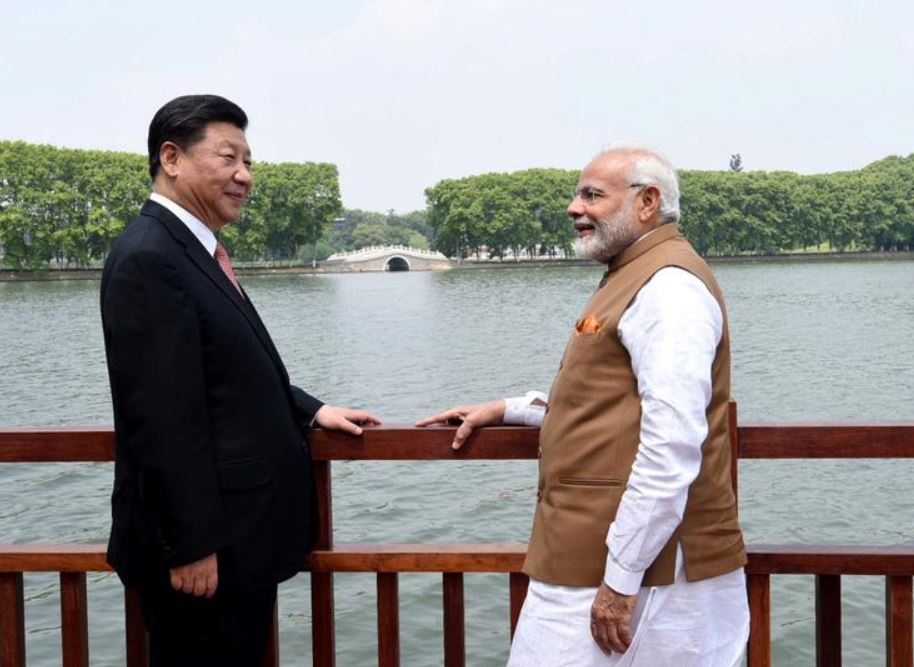Desperate times call for desperate measures, and there was never a more desperate situation for Beijing than the ongoing backlash for spreading the Coronavirus Pandemic. And therefore, China is raising the stakes at the disputed Sino-India border in Ladakh. Large scale intrusions from China have been reported and this time around, PLA troops are said to be transgressing from points where the perception of the Line of Actual Control (LAC) is not disputed by Beijing.
What Beijing is trying to do is change the global narrative by hitting out at India, and in fact, China’s plans of diverting attention from the COVID-19 crisis is already recognised. At the centre of Xi Jinping’s plans to deflect the global backlash is India and rising tensions along the disputed parts of the effective Sino-India border.
China wants to paint India as an aggressor and an encroacher in the disputed Ladakh theatre. This is why the Chinese State media too has started blaming India for the developing crisis. Global Times, a Communist Party of China (CCP) mouthpiece recently published a report accusing India of “recent, illegal construction of defence facilities” across the border “into Chinese territory”.
The State media report further stated, “India has been crossing the boundary line in the Galwan Valley region and entering Chinese territory.” The simple line is that China wants India to be seen as escalating tensions in Ladakh and then initiating a conflict holding India responsible for it.
It is in this context that the ongoing Indo-Nepal border disputes must also be seen. Apart from serving China’s strategic interests against New Delhi, the Indo-Nepal dispute is also helping Beijing weave a narrative that can help it divert the COVID rage.
The ruling Nepal Communist Party has been ratcheting irredentist tendencies within the landlocked country at the behest of Beijing. It cannot be a mere coincidence that the KP Oli Sharma government has been raking up minor territorial disputes with India after India inaugurated the Dharchula-Lipulekh road so that China can paint India as an expansionist villain in the region. This is why Nepal also claims that India has been occupying its territory.
And then much doesn’t need to be said about how China has been constantly trying to engineer the perception of India being the aggressor as far as the Kashmir dispute between India and Pakistan is concerned.
Even before the Pandemic originated in China, Beijing has been constantly trying to label India an occupational force in China, even though the narrative is detached from reality. What the Pandemic meant is that China would try to create a China-Nepal-Pakistan axis. Thus, while Beijing plays victim before the rest of the world, it is threatening New Delhi with two-front (Pakistan on one side, and Nepal and China on the other) hostilities.
This is no coincidence as it is China’s long-term strategy to use territorial disputes for diverting attention from internal turmoil and weaving new narratives. The 1962 Sino-India war, for example, was a scapegoat for Mao Zedong to divert attention from the famine that had struck the Dragon due to his “Smash Sparrow” campaign.
During the 1962 war, China had blamed India’s ‘Forward Policy’- New Delhi’s assertions of its territorial claims, as an excuse for waging war without any real provocation. This time around things are subtly different, it is more about battling the global backlash rather than suppressing internal dissent.
Even in 1979, Chinese leader Deng Xiaoping used the Vietnam war to downplay internal disillusion before initiating economic recovery of the middle kingdom.
This time, of course, China is battling hard to beat the international outrage for mishandling the COVID-19 outbreak. Its propaganda war and “mask diplomacy” have done more harm than good to Beijing’s cause.
The Communist Party of China (CCP) might also believe that India is stimulating the exodus of Multi-national Corporations (MNCs) from China by offering conditions suitable for foreign companies exiting China.
The rising tensions in Ladakh or the Indo-Nepal border tussles are more than just boundary disagreements. Despite the border scuffles, India hasn’t backed off from supporting Taiwan despite Chinese threats and scuffles- a reason why PM Modi sent two BJP MPs to attend Taiwanese President Tsai Ing-wen’s swearing-in. This is a clear departure from her 2016 swearing-in ceremony, suggesting a change in India’s Taiwan policy- a slight denouncement of the “One China Principle”.
All these factors are playing heavily on China in its decision to escalate matters in the Ladakh theatre, apart from forging the China-Nepal-Pakistan axis in a desperate bid to paint India as a villain. With tensions in Ladakh, China is trying to achieve goals that go beyond Ladakh itself.
